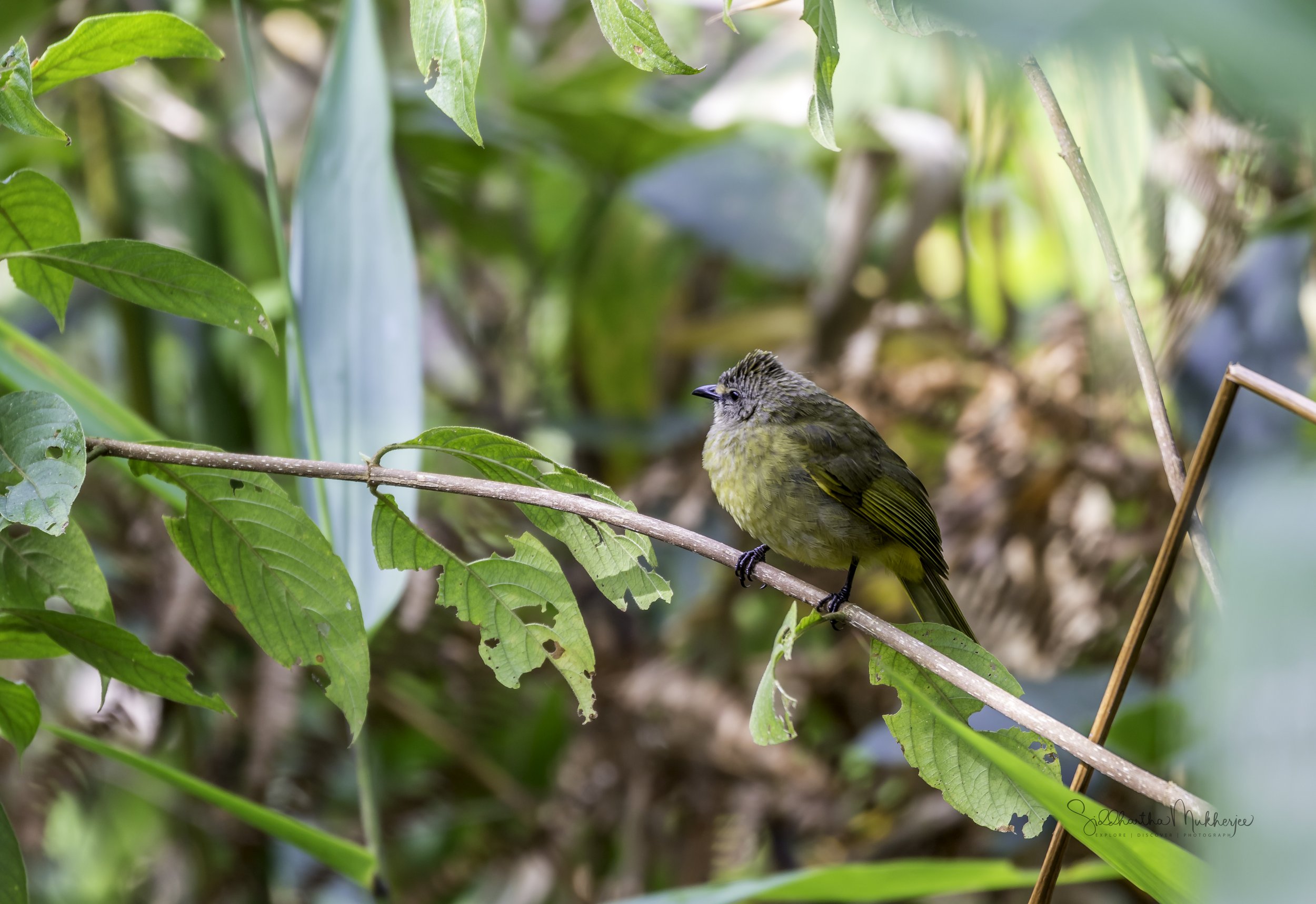Flavescent Bulbul
Pycnonotus flavescens
Doi Pha Hom Pok National Park, Chiang Mai, Thailand
Continuing the series on Bulbuls, this week - the third in the series - is about the pretty flavescent bulbul - also known as the Blyth's bulbul, flavescent green bulbul and the round-tailed green bulbul. And for this bird we make our way back into the hills of Chiang Mai but this time to very border of Thailand and Myanmar.
To read about the bulbuls I have written about earlier click below:
To read about some of my other birds from the Dois click the links below:
About 685 kilometers to the north of Bangkok lies the former seat of the ancient Lanna Kingdom & is considered one of the most scenic provinces in the country given its mountain ranges, valleys, flora and fauna. A land of misty mountains and colourful hill tribes, a playground for seasoned travellers, and a delight for adventurers. Despite its relatively small size and blissful calm, Chiang Mai truly has it all, a city that is still firmly Thai in its atmosphere and attitude. It is the second-largest changwat (province) of Thailand. Bordered by Chiang Rai to the northeast, Lampang and Lamphun to the south, Tak to the southwest, Mae Hong Son to the west and the Shan State of Myanmar to the north. Located in a verdant valley on the banks of the Ping River, Chiang Mai was founded in 1296 as the capital of the ancient Lanna Kingdom. Today it is a place where past and the present seamlessly merge with modern buildings standing side by side with venerable temples. Of all the places I have visited in Thailand, Chiang Mai with its forests and mountains and the historic city of Ayutthaya are by far my favourites.
The word Chiang itself is from North Thai, or Lanna, meaning town or city and Mai means new making Chiang Mai the New City as it was founded later than Chiang Rai, the earlier capital of King Meng Rai. The districts in the province are called amphoe, and sub-districts are called tambon. Another twist is the use of Nakhon (or Nakorn or Nakhorn), derived from the Sanskrit word Nagara, also means city, though strictly speaking it refers to a capital city such as Nakorn Sri Ayutthaya (more on Ayutthaya later). Indeed to emphasise its former status you may sometimes see Chiang Mai referred to as Nakhon Ping. Other common names of geographical features include mae (river) and doi which is north Thai for mountain - for example Doi Inthanon and Mae Ping.
The four Dois we spent our time on were Doi Inthanon, Doi Ang Khang, Doi Luang and Doi SanJu.
Doi Luang & Doi SanJu in close proximity to the Doi Pha Hom Pok National Park, it is the second highest mountain in Thailand and a part of the Dan Lao Mountain range, northwest of Chiang Mai, sharing the border with Myanmar. Doi SanJu, can be easily accessed from Fang town. The mountain forest and no traffic make it easy to view birds. The entire area is very quiet, secluded and home to rare species like Mrs. Humes Pheasant, Long–tailed Sibia, Himalayan Cutia, Black–throated Tit, Black–eared Shrike Babbler, Whiskered Yuhina, Crimson–breasted Woodpecker, Fire–tailed Sunbird to name a few.
We didn’t have the good fortune to see all the species on all the mountains, that would have been impossible, but we did rack up quite a number of species - about 95 of them. The gallery today is of the pretty Flavescent Bulbul.
‡‡‡‡‡
For a print of the beautiful birds from the Dois click on the button below to read my process and order a limited edition canvas.
‡‡‡‡‡
Flavescent Bulbul
The flavescent bulbul (Pycnonotus flavescens) is a species of songbird in the bulbul family of passerine birds. Its name comes from flavescent, a yellowish colour. It is found in south-eastern Asia and Borneo. It is a medium-large, drab, relatively retiring bulbul with fairly stout bill, rather long and heavy tail, crown feathers often raised to form odd conical crest.
Alternate names for the flavescent bulbul include Blyth's bulbul, flavescent green bulbul and round-tailed green bulbul.
Three subspecies are recognized:
P. f. flavescens - Blyth, 1845: Found in north-eastern India, north-eastern Bangladesh and western Myanmar
P. f. vividus - (Baker, ECS, 1917): Found in north-eastern Myanmar, southern China, Thailand and northern Indochina
P. f. sordidus - (Robinson & Kloss, 1919): Found in southern Indochina
It is a brownish-yellow bulbul with a faint white eyebrow and a weakly tufted crest. It roams about in pairs or small groups, sometimes associating with other species prefering open forest and edge habitat over dense mature forests. Often found in scrubbier, less pristine habitats than other bulbuls in its range, though tends not to occur in cities as readily as Red-vented and Red-whiskered Bulbuls. It has a simple song consisting of alternating sharp whistles, warbled notes, and buzzy gurgling. Also gives harsh low buzzing calls.
It was a beautiful experience to get so close to the bird as I was once again shooting with the Canon 7D Mark ii paired with the exceptionally sharp EF 100-400mm Version 2. The 7D Mark ii paired with the 100-400mm are - in my opinion - the perfect combination for wildlife and bird photography especially when done from a hide in close proximity to the birds.
With that said I think it is time to move onto the gallery of this beautiful bulbul whose natural habitat is subtropical or tropical moist montane forests.
‡‡‡‡‡
Related Posts























